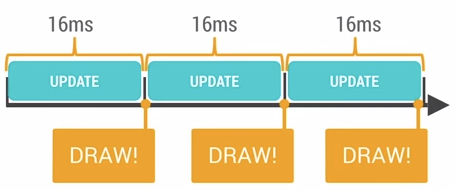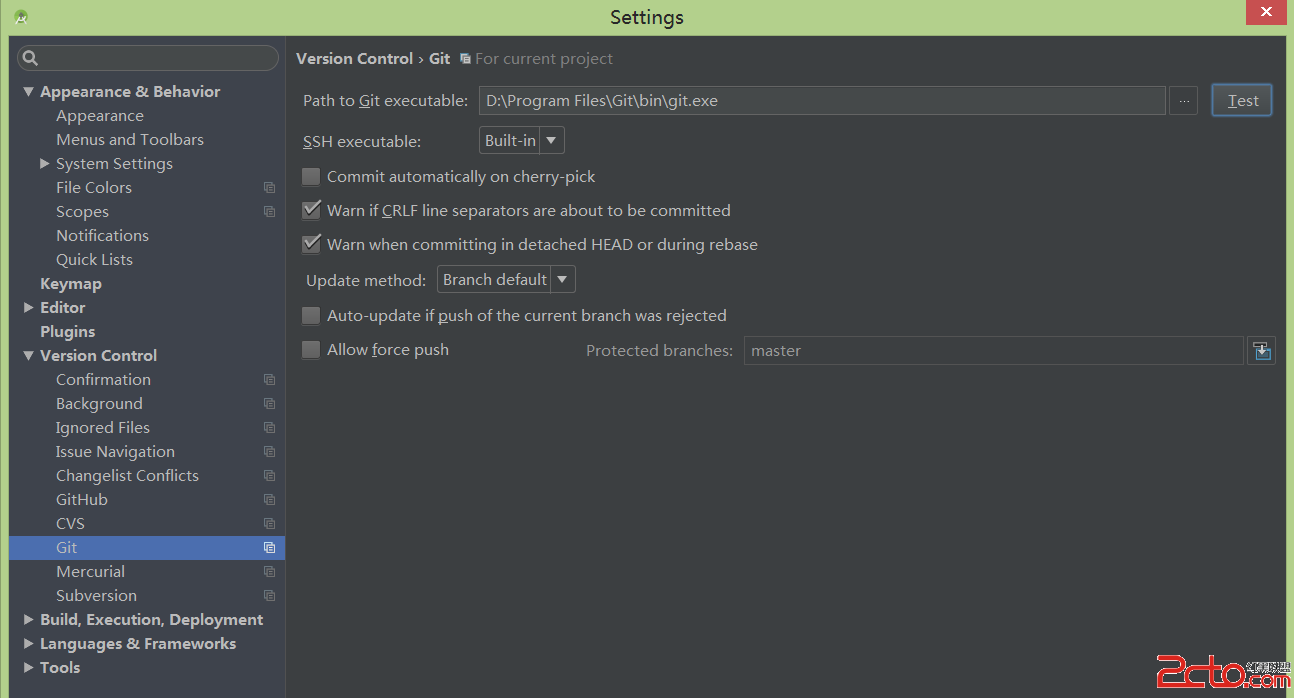編輯:關於android開發
之前關於如何實現屏幕頁面切換,寫過一篇博文《Android中使用ViewFlipper實現屏幕切換》,相比ViewFlipper,ViewPager更適用復雜的視圖切換,而且Viewpager有自己的adapter,這也讓其適應復雜對象,實現數據的動態加載。
ViewPager是谷歌官方給我們提供的一個兼容低版本安卓設備的軟件包,裡面包囊了只有在安卓3.0以上可以使用的api。而viewpager就是其中之一,利用它,我們可以做很多事情,從最簡單的導航,到頁面菜單等等。
下面我們就展示下ViewPager可以實現的兩種簡單效果:
實現效果如下(4張視圖(layout)):

1 <?xml version="1.0" encoding="utf-8"?> 2 <LinearLayout xmlns:android="http://schemas.android.com/apk/res/android" 3 android:orientation="vertical" android:layout_width="match_parent" 4 android:layout_height="match_parent"> 5 <android.support.v4.view.ViewPager 6 android:layout_width="match_parent" 7 android:layout_height="match_parent" 8 android:layout_gravity="center" 9 android:gravity="center" 10 android:id="@+id/vp"> 11 <android.support.v4.view.PagerTabStrip 12 android:layout_width="match_parent" 13 android:layout_height="wrap_content" 14 android:id="@+id/tap"> 15 </android.support.v4.view.PagerTabStrip> 16 </android.support.v4.view.ViewPager> 17 </LinearLayout>
注意事項:
<1、這裡ViewPager和PagerTabStrip都要把包名寫全了,不然會ClassNotFound
<2、API中說:在布局xml把PagerTabStrip當做ViewPager的一個子標簽來用,不能拿出來,不然還是會報錯
<3、在PagerTabStrip標簽中可以用屬性android:layout_gravity=TOP|BOTTOM來指定title的位置
<4、如果要顯示出PagerTabStrip某一頁的title,需要在ViewPager的adapter中實現getPageTitle(int)
1 <?xml version="1.0" encoding="utf-8"?> 2 <LinearLayout xmlns:android="http://schemas.android.com/apk/res/android" 3 xmlns:app="http://schemas.android.com/apk/res-auto" 4 android:orientation="vertical" android:layout_width="match_parent" 5 android:layout_height="match_parent"> 6 <ImageView 7 android:layout_width="match_parent" 8 android:layout_height="match_parent" 9 android:src="@mipmap/a1" 10 android:scaleType="centerCrop" 11 android:id="@+id/iv1" /> 12 </LinearLayout>
在Activity裡實例化ViewPager組件,並設置它的Adapter(就是PagerAdapter,方法與ListView一樣的)
實現一個PagerAdapter,覆蓋以下方法:
instantiateItem(ViewGroup, int)//用來實例化頁卡
destroyItem(ViewGroup, int, Object)//刪除頁卡
getCount() //返回頁卡的數量
isViewFromObject(View, Object)//判斷兩個對象是否相等
getPageTitle(int position)//設置標簽顯示的標題
設置指示標簽的屬性
pagerTabStrip.setTabIndicatorColor();//指示器的顏色
pagerTabStrip.setBackgroundColor();//背影色
pagerTabStrip.setTextColor(Color.WHITE);//字體顏色
1 import android.os.Bundle;
2 import android.support.annotation.Nullable;
3 import android.support.v4.view.PagerAdapter;
4 import android.support.v4.view.ViewPager;
5 import android.support.v7.app.AppCompatActivity;
6 import android.view.View;
7 import android.view.ViewGroup;
8 import java.util.ArrayList;
9 /**
10 * Created by panchengjia on 2016/12/1.
11 */
12 public class ViewPagerDemo extends AppCompatActivity {
13 private ViewPager vp;
14 //聲明存儲ViewPager下子視圖的集合
15 ArrayList<View> views = new ArrayList<>();
16 //顯示效果中每個視圖的標題
17 String[] titles={"一號美女","二號美女","三號美女","四號美女"};
18 @Override
19 protected void onCreate(@Nullable Bundle savedInstanceState) {
20 super.onCreate(savedInstanceState);
21 setContentView(R.layout.viewpager_layout);
22 vp= (ViewPager) findViewById(R.id.vp);
23 initView();//調用初始化視圖方法
24 vp.setAdapter(new MyAdapter());//設置適配器
25 }
26 //初始化視圖的方法(通過布局填充器獲取用於滑動的視圖並存入對應的的集合)
27 private void initView() {
28 View v1 = getLayoutInflater().inflate(R.layout.layout1,null);
29 View v2 = getLayoutInflater().inflate(R.layout.layout2,null);
30 View v3 = getLayoutInflater().inflate(R.layout.layout3,null);
31 View v4 = getLayoutInflater().inflate(R.layout.layout4,null);
32 views.add(v1);
33 views.add(v2);
34 views.add(v3);
35 views.add(v4);
36 }
37 class MyAdapter extends PagerAdapter{
38 @Override
39 public int getCount() {
40 return views.size();
41 }
42 @Override
43 public boolean isViewFromObject(View view, Object object) {
44 return view==object;
45 }
46 //重寫銷毀滑動視圖布局(將子視圖移出視圖存儲集合(ViewGroup))
47 @Override
48 public void destroyItem(ViewGroup container, int position, Object object) {
49 container.removeView(views.get(position));
50 }
51 //重寫初始化滑動視圖布局(從視圖集合中取出對應視圖,添加到ViewGroup)
52 @Override
53 public Object instantiateItem(ViewGroup container, int position) {
54 View v =views.get(position);
55 container.addView(v);
56 return v;
57 }
58 @Override
59 public CharSequence getPageTitle(int position) {
60 return titles[position];
61 }
62 }
63 }
實現效果如下(3張視圖滑動引導):

開始代碼前注釋:1、本次未實現循環輪播效果;2、導航原點資源圖片注解:default_holo為未選中狀態,touched_holo為選中後實心狀態。(也可自己用Shape繪制)
主布局為FrameLayout,在ViewPager(這裡因為存在導航原點,不設置PagerTabStrip)上嵌套包含3個導航原點(由滑動視圖數量決定)的linearLayout布局(本次設置該布局位於底部):
1 <?xml version="1.0" encoding="utf-8"?> 2 <FrameLayout 3 xmlns:android="http://schemas.android.com/apk/res/android" 4 xmlns:tools="http://schemas.android.com/tools" 5 android:id="@+id/activity_main" 6 android:layout_width="match_parent" 7 android:layout_height="match_parent" 8 tools:context="com.example.administrator.myapplication11.MainActivity"> 9 <android.support.v4.view.ViewPager 10 android:layout_width="match_parent" 11 android:layout_height="match_parent" 12 android:id="@+id/vp"> 13 </android.support.v4.view.ViewPager> 14 <LinearLayout 15 android:id="@+id/point_layout" 16 android:layout_width="match_parent" 17 android:layout_height="wrap_content" 18 android:layout_gravity="bottom" 19 android:orientation="horizontal"> 20 <ImageView 21 android:layout_width="0dp" 22 android:layout_height="wrap_content" 23 android:layout_weight="1" 24 android:src="@mipmap/default_holo"/> 25 <ImageView 26 android:layout_width="0dp" 27 android:layout_height="wrap_content" 28 android:layout_weight="1" 29 android:src="@mipmap/default_holo" /> 30 <ImageView 31 android:layout_width="0dp" 32 android:layout_height="wrap_content" 33 android:layout_weight="1" 34 android:src="@mipmap/default_holo" 35 android:id="@+id/imageView" /> 36 </LinearLayout> 37 </FrameLayout>
1 <?xml version="1.0" encoding="utf-8"?> 2 <LinearLayout xmlns:android="http://schemas.android.com/apk/res/android" 3 android:orientation="vertical" android:layout_width="match_parent" 4 android:layout_height="match_parent"> 5 <ImageView 6 android:layout_width="match_parent" 7 android:layout_height="match_parent" 8 android:scaleType="centerCrop" 9 android:src="@mipmap/genie"/> 10 </LinearLayout>
通過實現OnPageChangeListener接口實現在視圖切換時導航原點狀態的變化),其中關於OnPageChangeListener中方法的詳細解釋,請參考博文
《ViewPager的setOnPageChangeListener方法詳解》這裡不做贅述:
1 import android.support.v4.view.PagerAdapter;
2 import android.support.v4.view.ViewPager;
3 import android.support.v7.app.AppCompatActivity;
4 import android.os.Bundle;
5 import android.view.View;
6 import android.view.ViewGroup;
7 import android.widget.ImageView;
8 import android.widget.LinearLayout;
9 import java.util.ArrayList;
10 /**
11 * Created by panchengjia on 2016/11/30.
12 */
13 public class MainActivity extends AppCompatActivity implements ViewPager.OnPageChangeListener{
14 private ViewPager vp;
15 private LinearLayout point_layout;
16 ArrayList<View> views =new ArrayList<>();
17 //實例化存儲imageView(導航原點)的集合
18 ArrayList<ImageView> imageViews = new ArrayList<>();
19 int currImage;//記錄當前頁(導航原點)
20 @Override
21 protected void onCreate(Bundle savedInstanceState) {
22 super.onCreate(savedInstanceState);
23 setContentView(R.layout.activity_main);
24 vp= (ViewPager) findViewById(R.id.vp);
25 initView();//調用初始化視圖方法
26 initPoint();//調用初始化導航原點的方法
27 vp.addOnPageChangeListener(this);
28 vp.setAdapter(new MyAdapter());
29 }
30 /*將point_layout中包含的imageView(導航原點)添加到imageViewS集合中
31 *並設置layout1(第一視圖)的導航原點(對應集合0下標)的圖片
32 * 為touched_holo(觸摸狀態的圖片)
33 */
34 private void initPoint() {
35 point_layout= (LinearLayout) findViewById(R.id.point_layout);
36 int counnt = point_layout.getChildCount();//獲取point數量
37 for (int i=0;i<counnt;i++){
38 imageViews.add((ImageView) point_layout.getChildAt(i));
39 }
40 imageViews.get(0).setImageResource(R.mipmap.touched_holo);
41 }
42 private void initView() {
43 View v1=getLayoutInflater().inflate(R.layout.layout1,null);
44 View v2=getLayoutInflater().inflate(R.layout.layout2,null);
45 View v3=getLayoutInflater().inflate(R.layout.layout3,null);
46 views.add(v1);
47 views.add(v2);
48 views.add(v3);
49 }
50 //OnPageChangeListener的方法,這裡不做具體實現
51 @Override
52 public void onPageScrolled(int position, float positionOffset, int positionOffsetPixels) {
53
54 }
55 //設置滑動到對應位置的視圖後,導航原點的不同狀態(圖片)
56 @Override
57 public void onPageSelected(int position) {
58 ImageView preView = imageViews.get(currImage);
59 preView.setImageResource(R.mipmap.default_holo);
60 ImageView currView = imageViews.get(position);
61 currView.setImageResource(R.mipmap.touched_holo);
62 currImage = position;
63 }
64 //OnPageChangeListener的方法,這裡不做具體實現
65 @Override
66 public void onPageScrollStateChanged(int state) {
67
68 }
69 class MyAdapter extends PagerAdapter {
70 @Override
71 public int getCount() {
72 return views.size();
73 }
74 @Override
75 public boolean isViewFromObject(View view, Object object) {
76 return view==object;
77 }
78 @Override
79 public void destroyItem(ViewGroup container, int position, Object object) {
80 container.removeView(views.get(position));
81 }
82 @Override
83 public Object instantiateItem(ViewGroup container, int position) {
84 View v = views.get(position);
85 container.addView(v);
86 return v;
87 }
88 }
89 }
至此,本次的ViewPager實現示例所需代碼已完成,當然這只是ViewPager最簡單的功能,後續還會更新一些ViewPager的高級用法,歡迎小伙伴們繼續支持。
當然篇幅所限,這只是ViewPager最最簡單的功能,
 EditText 顯示明文和密碼,edittext明文密碼
EditText 顯示明文和密碼,edittext明文密碼
EditText 顯示明文和密碼,edittext明文密碼1、效果圖 2、布局文件 <?xml version=1.0 encoding=utf-
 Android Activity各啟動模式的差異,androidactivity
Android Activity各啟動模式的差異,androidactivity
Android Activity各啟動模式的差異,androidactivityActivity共有四種啟動模式:standard,singleTop,singleTas
 Android性能優化的淺談,android性能優化
Android性能優化的淺談,android性能優化
Android性能優化的淺談,android性能優化一、概要: 本文主要以Android的渲染機制、UI優化、多線程的處理、緩存處理、電量優化以及代碼規范等幾方面
 AndroidStudio項目提交(更新)到github最詳細步驟
AndroidStudio項目提交(更新)到github最詳細步驟
AndroidStudio項目提交(更新)到github最詳細步驟 在使用studio開發的項目過程中有時候我們想將項目發布到github上,以前都是用一種比較麻煩的方式